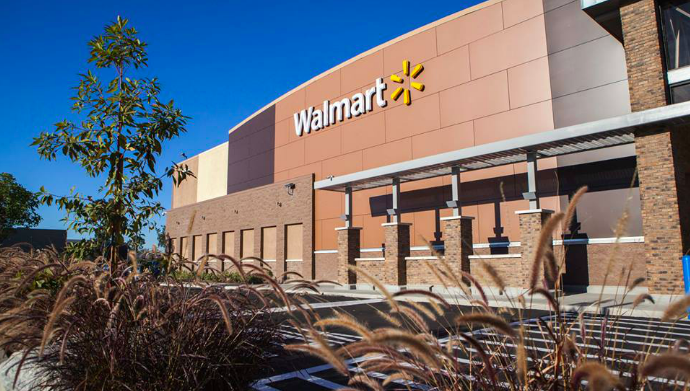If Walmart was to acquire Flipkart, the deal is unlikely to change anything in the Indian e-commerce market; instead, it may create a bunch of challenges for Walmart

The big day is here. Retail giant Walmart is readying a war chest to acquire Flipkart, a Singapore-headquartered ‘not-for-profit’ e-commerce firm currently controlled by funds from the United States, Russia, China, Japan and South Africa. And India is celebrating with high-fives. Here’s why.
Over the past decade, Flipkart and other e-commerce startups raised billions of dollars, offered unsustainable discounts to acquire customers while brutally elbowing out other less-funded local competitors to become the undisputed leaders in gross merchandise value and financial losses. Unfortunately for them, Amazon, the gold standard in e-commerce, armed with superior technology, stronger brand, operational excellence and access to huge funds, entered the scene. This created a problem for the investors who suddenly saw huge potential exits transforming into irrelevance (Snapdeal, Jabong) and, specifically, Flipkart moving from industry numero uno to number two in a two-horse race. Or, in other words, last.
Enter nationalistic pride. We cannot allow foreign companies to make us their digital colony? Let’s protect ‘Indian’ startups against global players. Indian consumers are at risk by sharing their data with ‘evil’ American firms, such as Amazon and Uber, instead of with Indian startups such as Flipkart and Ola who are funded from America, Japan, China, Russia and South Africa, and will, therefore, better protect our data.
Beneath such silly arguments was a growing realisation among the funds who had bet big: that it is hard to get meaningful exits in India. So, when Walmart decided to put in a humongous sum to acquire Flipkart and battle Amazon in India, you can hear the collective sigh of relief from investors who want to exit and run before Walmart does a rethink.
Also Read: ‘It’s complicated’: Experts weigh in on the possibility of Uber striking a deal with India’s Ola
And hence the high fives. To be fair, it does get a monkey — that you cannot get exits in India — off our backs. Here’s the thing, though. The deal is unlikely to change anything in the Indian e-commerce market and instead may create a bunch of challenges for Walmart.
One, several Indian e-commerce firms (including Flipkart) who have followed the inventory model have (allegedly) broken the law which prohibits FDI into B2C e-commerce. To escape action by the authorities (who seemingly only send notices) most startups have created separate backend and frontend entities. But the FDI law is still (allegedly) being broken. While the startups have somehow navigated the situation, when Walmart takes over, we can expect renewed scrutiny against the transaction.
Two, Walmart is unlikely to get any return on its investment even after a decade. Online shopping is less than 1% of retailing in India and Amazon is strongly entrenched already, which means Walmart will fight hard to capture, at best, 25% of 1% of retailing in India. As the world’s largest offline retail chain, they should figure out how to partner with offline retailers and target 99% of the market. This is too much for too little.
Three, Walmart is globally strong in food and groceries, which is not a Flipkart category. Walmart may try to change Flipkart to sell groceries, which will be hard, or focus on non-groceries, like Flipkart does, which could be harder. Or attempt both, which is worse.
Here’s the secret to Amazon’s success globally — if a shopper knows what she wants, Amazon, which can relentlessly execute on selection, pricing and convenience with operational excellence, will win hands down. If Walmart sells the same stuff that Flipkart does today, Amazon will simply get further and further ahead. And it is unlikely Walmart is acquiring Flipkart to sell personalised stuff.
Four, Walmart’s track record against Amazon in the US has been disappointing. Despite large investments, they have been unable to compete with Amazon. In China, Walmart acquired Yihaodian, they invested in JD.com and are now trying to merge both. Meanwhile, Alibaba gets stronger and stronger. I do not see Walmart suddenly executing plans in India where they will beat both Amazon and Alibaba at the same time.
So, is this a wrong acquisition? Absolutely. If I was advising Walmart, I would simply ignore e-commerce in India while exploring ways of partnering strong offline retailers in India and launch an aggressive omni-channel play. Walmart’s strength is offline, that’s what they should use to win. Using online to beat Amazon is like wearing a raincoat to counter a tsunami.
The article ‘The Walmart-Flipkart deal: wearing a raincoat to beat a tsunami‘ first appeared in the Hindustan Times.
(K Vaitheeswaran, a veteran internet entrepreneur and author of Failing to Succeed – the story of India’s first e-commerce company, is the co-founder of India’s first e-commerce company Indiaplaza)
Image Credit: Walmart.com
The post The Walmart-Flipkart deal: wearing a raincoat to beat a tsunami appeared first on e27.